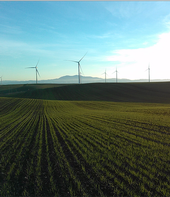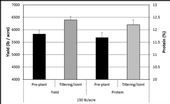- Author: Konrad Mathesius
UC Cooperative Extension will be hosting two field days this month that may be of interest to rotational crop growers who work with small grains. Full agendas are pending, but mark your calendars in the meantime.
1) Thursday, April 21st: Controlling Italian ryegrass in Small Grains: Join us for a series of short presentations on different methods of control for Italian ryegrass. Speakers will include industry representatives and UC researchers. Participants will also have opportunity to observe this year's herbicide trial on-site, which will exhibit the efficacy of several available chemical controls and several different tank mixtures. Discussions will also cover alternative methods for control and...
- Author: Konrad Mathesius

Join us from 9 a.m.- 10 a.m. on Wednesday, September 29th for a short online demonstration/webinar on several powerful nitrogen management webtools that have been developed by UC researchers, including case studies from this year in the Sacramento Valley.
This webinar is free of charge and open to the public.
Click here for the full agenda and Zoom link
Please register by clicking the link below (required for CE units).
CE Units: CURES (1.0)
Other topics...
- Author: Konrad Mathesius
South Sacramento Valley Wheat and Barley Field Demonstration Day
Wednesday, April 24, 2019, 8:45 a.m. – 10:30 a.m.
23947 Road 13, Capay, CA
8:45 a.m. Registration, Coffee, and Donuts
9:00 a.m. Italian Ryegrass: Updates on Cultivation vs Herbicide Trials: resistance and methods for control
Konrad Mathesius, UCCE Agronomy Advisor, Yolo, Sacramento, and Solano
9:15 a.m. Herbicide Programs for Barley...
- Author: Konrad Mathesius
- Author: Mark Lundy

Much like other parts of California, the Southern Sacramento Valley has seen some substantial rainstorms this season. The weather patterns left growers with a few narrow planting windows spread out over the last two months. This combined with the fact that growing degree day accumulation has been steeper than average (largely due to warmer nights) means that wheat growth stage can vary significantly from one field to the next. Now would be a good time to assess wheat stand, weed pressure, sample for soil nitrate levels, and start planning for nitrogen applications as fields enter the tillering phase of development.
As has been discussed in previous blog posts, nitrogen applications are most efficient when
- Author: Konrad Mathesius
- Contributor: Mark Lundy
- Editor: Rachael Long

Nitrogen budgets are becoming more of a norm for California growers, and more than ever it's important for growers to get the greatest return for their nitrogen applications. One fertilizer management approach that can improve both yield and nitrogen use efficiency is to shift nitrogen applications from being mostly pre-plant to mostly in-season.
Research from the University of California has shown that in-season applications of nitrogen applied from the tillering to the jointing stage resulted in higher wheat yields and grain protein concentrations than pre-plant applications (Figure 1). This is something to keep in mind as we approach the winter growing season.
Figure 1....


